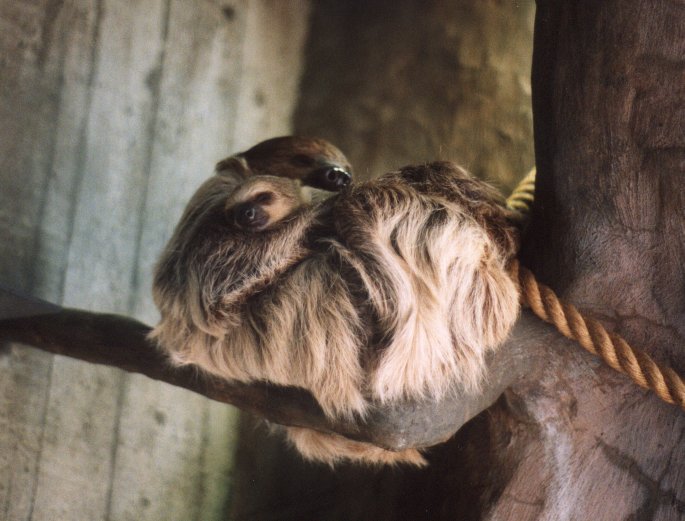

Choloepus didactylus
Southern two-toed sloths live in Venezuela, Guyana, Brazil, Ecuador, Colombia, and Peru. They eat leaves, fruits, flowers, and shoots. Living a solitary life, they hang upside-down for most of their life in the forest canopy. They are nocturnal, moving very slowly at night, at around 0.5 km/h, but can reach up to 1.6 km/h when they want to move fast. They have two claws on the front feet and three on the hind ones. They can swim better than they can walk, an adaptation they have acquired to the annual floods in the forest. During the rainy season their hair is often covered in blue-green algae, which helps with camouflage. They are very good at hiding beneath branches, and may also curl up into a tight ball in a niche in their tree to resemble a termite nest. Their most common predators are eagles and jaguars. They have a very slow metabolic rate, only about 40-45% of that of a comparably-sized terrestrial mammal. It may take up to a month for some of the vegetation to completely digest and pass through their system. In spite of their apparent defenselessness, sloths have adapted very well in the wild because their predators have a hard time spotting them, and also because they consume food that very few other animals want.
The above picture was taken in the zoo of Cleveland, Ohio, in August, 2003.
Family Megalonychidae
Order Xenarthra
Subclass Eutheria
Class Mammalia
Subphylum Vertebrata
Phylum Chordata
Kingdom Animalia
Life on Earth
Index